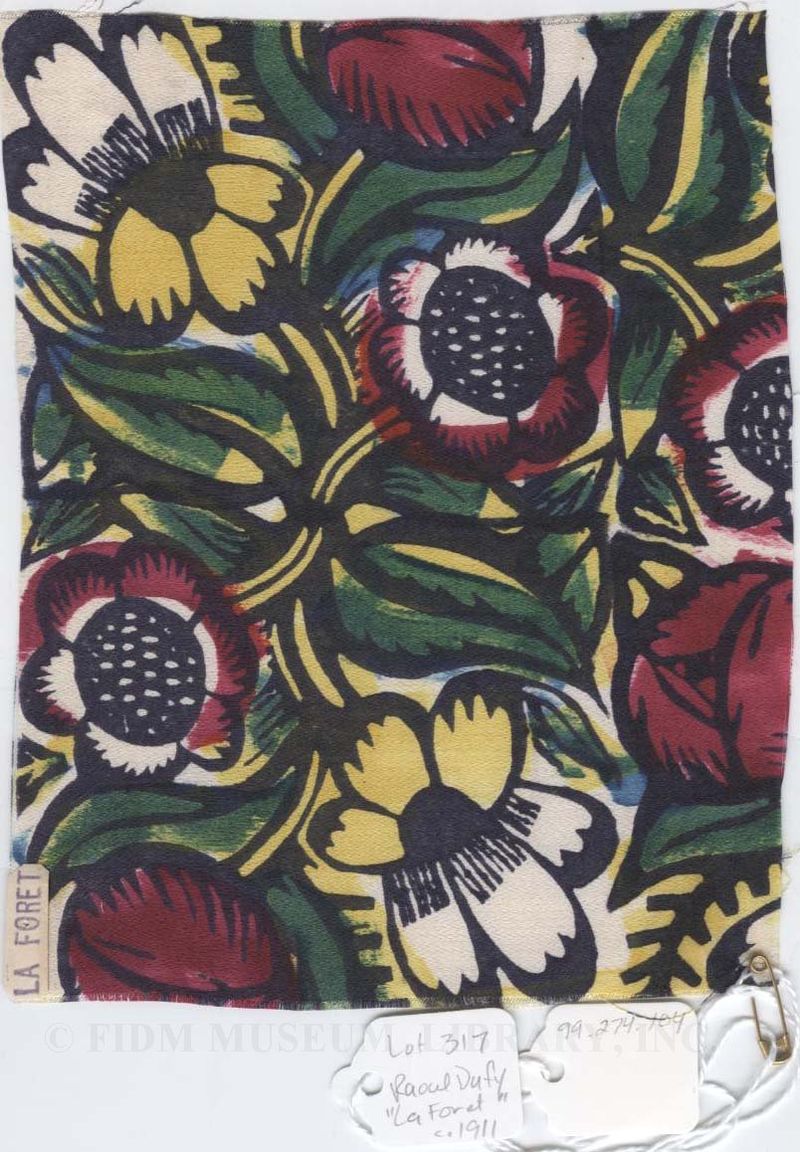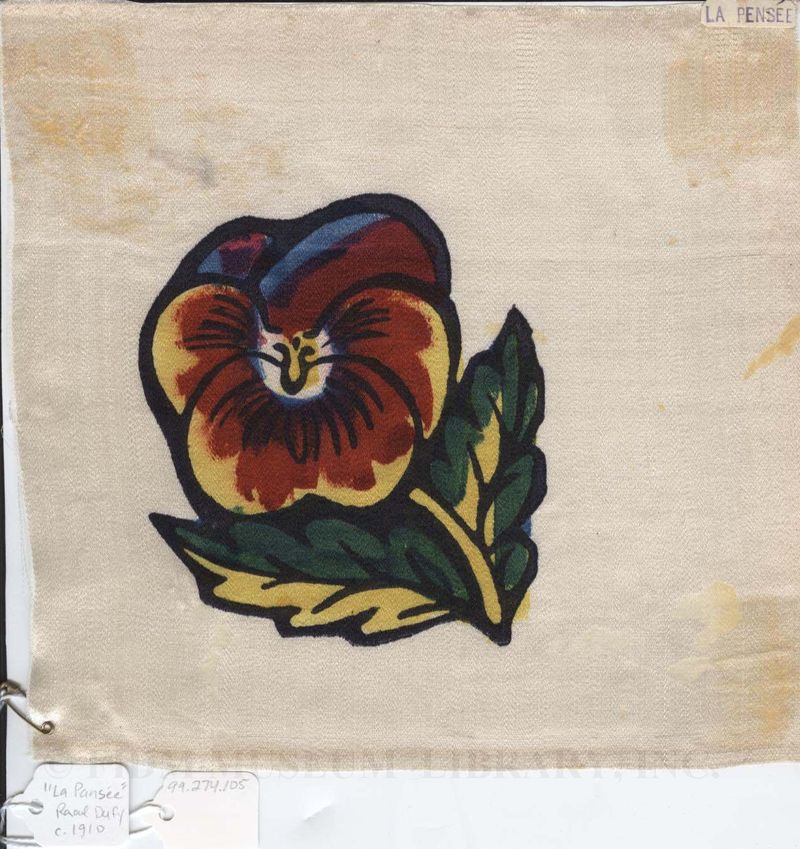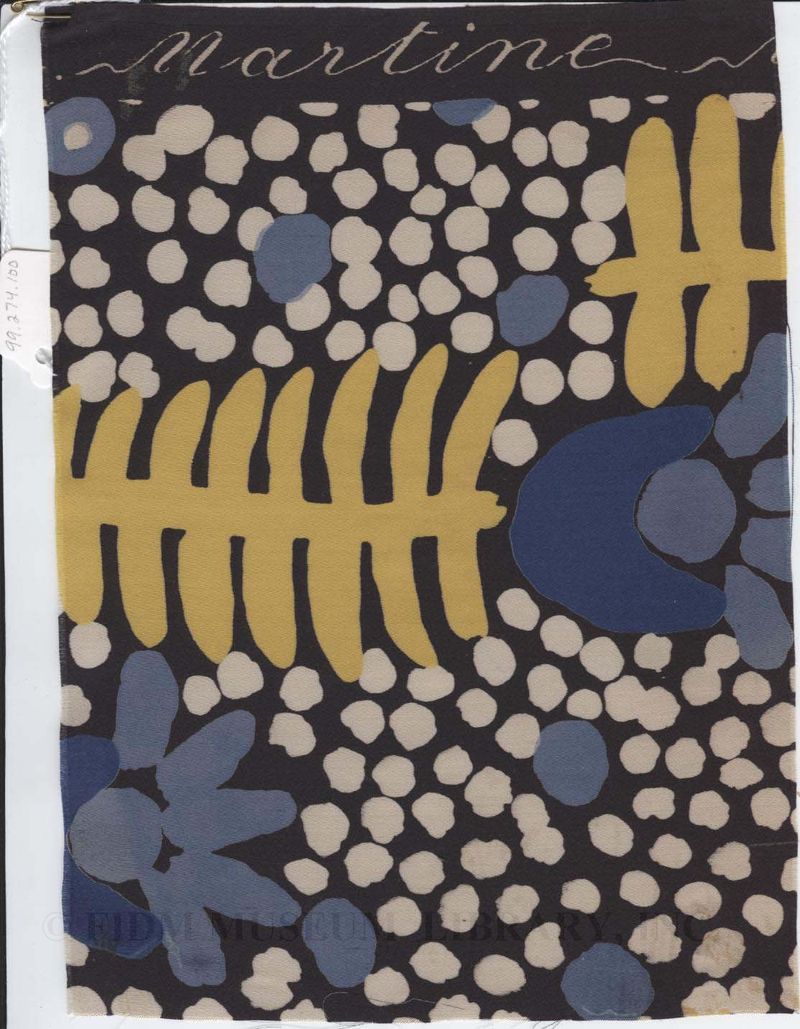Found textiles
All museum employees are charged with careful collection oversight. We monitor temperature and humidity, store objects with an eye to preventing damage while also trying to learn more about each object in the collection. Despite these efforts, we sometimes overlook fabulous objects hidden in plain sight. Over the past few years, we have updated our storage facilities through the installation of compact storage units. The resulting upheaval caused us to look more closely at a collection of textile swatches stored in enormous albums. These albums were stored on a shelf in the Study Collection and no one currently working in the FIDM Museum had ever taken more than a cursory look at the swatches within. Once we started to look more carefully at the albums, we were shocked and excited to see what we had been missing! The albums were filled with small snippets of both dress and furnishing fabrics dating from the late nineteenth to the mid-twentieth century. Though many of the swatches were remarkable solely for their compelling design, it was exciting to spot textiles that could be associated with specific designers and stylistic movements. Some of the most important swatches are featured below.
 "La Foret" printed textile Raoul Dufy c. 1911 Gift of Robert Fortunoff 99.274.104 Raoul Dufy (1877-1953) was a French painter who met couturier Paul Poiret around 1910. Together they established a workshop for block-printing textiles. As a painter, Dufy was associated with Fauvism, a style of painting characterized by large areas of bold colorization, and a certain rapidity and spontaneity in execution. In his capacity as textile designer for Poiret, Dufy created textiles featuring extravagant portrayals of natural forms which can be clearly linked to his paintings.
"La Foret" printed textile Raoul Dufy c. 1911 Gift of Robert Fortunoff 99.274.104 Raoul Dufy (1877-1953) was a French painter who met couturier Paul Poiret around 1910. Together they established a workshop for block-printing textiles. As a painter, Dufy was associated with Fauvism, a style of painting characterized by large areas of bold colorization, and a certain rapidity and spontaneity in execution. In his capacity as textile designer for Poiret, Dufy created textiles featuring extravagant portrayals of natural forms which can be clearly linked to his paintings.
 "La Pensee" printed textile Raoul Dufy c. 1910 Gift of Robert Fortunoff 99.274.105 Dufy's textile designs for Poiret were inspiring and difficult to imitate. In 1912, the French textile manufacturer Bianchini-Ferier persuaded Dufy to leave Poiret as they were unable to find a similar talent. Until 1928, Dufy worked exclusively for Bianchini-Ferier. While designing for Bianchini-Ferier, Dufy often referenced the designs created for Poiret. Meanwhile, Poiret continued to feature Dufy's textile designs as an integral part of his overall aesthetic. In 1920, Poiret's summer collection exclusively utilized Dufy designed textiles.1
"La Pensee" printed textile Raoul Dufy c. 1910 Gift of Robert Fortunoff 99.274.105 Dufy's textile designs for Poiret were inspiring and difficult to imitate. In 1912, the French textile manufacturer Bianchini-Ferier persuaded Dufy to leave Poiret as they were unable to find a similar talent. Until 1928, Dufy worked exclusively for Bianchini-Ferier. While designing for Bianchini-Ferier, Dufy often referenced the designs created for Poiret. Meanwhile, Poiret continued to feature Dufy's textile designs as an integral part of his overall aesthetic. In 1920, Poiret's summer collection exclusively utilized Dufy designed textiles.1
 Printed textile Atelier Martine c. 1911 99.274.100 Gift of Robert Fortunoff
Printed textile Atelier Martine c. 1911 99.274.100 Gift of Robert Fortunoff
In addition to the short-lived textile printing workshop he established with Raoul Dufy, Paul Poiret also established the Atelier Martine in 1911. Comprised of young girls without formal artistic training, the Atelier Martine functioned both as a design laboratory and workshop. Students were sent out into the world to find inspiration for textile designs, which were critiqued by both Poiret himself and visiting artists. The hope was that these untrained students would create unique designs, unfettered by ideas about design and artistic traditions. Some of the resulting designs were turned into yardage, which was then used in Poiret-designed garments or for home decoration. Check back later this week for an example of Poiret's garment design!
1.Blausen, Whitney, and Sydonie Benét. "Bianchini-Férier." Contemporary Fashion. Ed. Taryn Benbow-Pfalzgraf. 2nd ed. Detroit: St. James Press, 2002. 2 pp. Gale Virtual Reference Library. Gale. Fashion Inst of Design & Merchandising. 17 Aug. 2009. Poli, Doretta Davanzo. Twentieth-century Fabrics: European and American Designers and Manufactures.Italy: Skira. 2007.